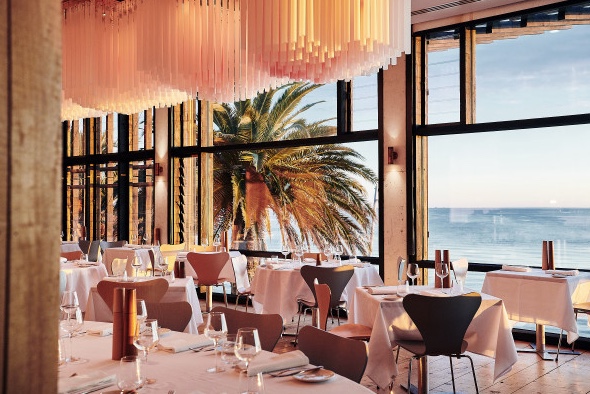Planning your wedding is one of the most exciting times in life. But if you’re like many couples, you might be wondering: What’s the difference between the wedding ceremony and the reception? Even though these two events often take place on the same day, they are far from the same thing. Each serves a unique purpose, has different expectations, and of course, requires separate planning.
I’ve been fortunate enough to work with countless couples in Melbourne, helping them craft their big day. When I got married at Vogue Ballroom in 2017, I quickly realised just how much goes into each event—and how different they really are!
In this guide, I’ll break down the key differences between the wedding ceremony and the wedding reception, providing you with insights to help you plan seamlessly and make the most of both parts of your wedding day.
What Is the Wedding Ceremony vs Wedding Reception?
The wedding ceremony and the wedding reception are like two sides of the same coin. They’re connected, of course, but they serve two very different purposes and require distinct planning.
The Core Purpose of a Wedding Ceremony
The wedding ceremony is the formal, official event where a couple exchanges vows and is legally married. It’s the moment where your commitment to each other is sealed. Think of it as the heartbeat of your wedding day—the emotional and symbolic beginning of your marriage.
For many couples, this is the most personal and meaningful part of the day. When I married my partner at Vogue, we carefully chose every element of the ceremony to reflect our personalities and values. From our vows to the readings, everything spoke to who we are as a couple.
The Purpose of a Wedding Reception
Once the formalities are over, the wedding reception kicks off the celebration. This is the part of the day where you get to let your hair down, enjoy your first few hours as a married couple, and celebrate with everyone you care about. The reception is all about joy—eating, drinking, dancing, and sharing in the excitement of your new life together.
I always tell couples to think of the reception as a party to top all parties. It’s your chance to create unforgettable memories with family and friends. And based on my own experience, there’s nothing like that first dance as a married couple with all eyes on you—and the best part? Everyone’s there to celebrate with you!
Key Differences Between a Wedding Ceremony and Reception
Now that we’ve covered the basics, let’s dive into the nitty-gritty of what really sets these two events apart.
Timing, Duration, and Venue Choices
One of the first things you’ll notice is the timing. The wedding ceremony is typically short—usually around 20-60 minutes. It’s formal, emotional, and focused on one singular event: your vows. In my own ceremony, we kept things simple and intimate, surrounded by close family and friends.
Then there’s the reception, which tends to stretch on for several hours. In fact, it’s not unusual for receptions to last anywhere between 4-7 hours. We had a reception at Vogue Ballroom that lasted well into the night, with speeches, dancing, and entertainment. The venue is key here—it’s where the party happens, so you want to choose a space that can accommodate both the fun and the formalities. You might choose a ballroom like Vogue or an outdoor space with sweeping views, depending on your style and preferences.
If you’re holding both events in different locations (and many couples do), the timing between the ceremony and reception can be tricky. When my partner and I got married, we had about an hour gap for photos and for guests to travel between locations. While this worked out perfectly, I always recommend planning well in advance for transport, especially if you’re expecting people to travel.
Atmosphere and Formality
When it comes to atmosphere, you can’t get much more different than the wedding ceremony and reception. The ceremony is typically solemn, formal, and emotional. It’s that sacred moment where you commit your life to one person. For me, walking down the aisle was a surreal moment of stillness and anticipation. Everything was calm, and every eye was on the couple—no distractions, just a sacred focus on the vows.
In contrast, the reception is all about celebration! It’s vibrant, fun, and lively. After the ceremony, it’s time to relax, let loose, and enjoy the festivities with your loved ones. For our reception, we danced until the early hours with a live band keeping the energy high. The vibe is significantly different from the ceremony, and it’s important to choose decor, activities, and even music that reflect the fun, celebratory nature of the reception.
The Venue: From Sacred to Festive
The venues for each event are often different, reflecting their unique purposes. While the wedding ceremony is traditionally held in venues with spiritual or historical significance—like churches, temples, or city halls—the reception is typically hosted in a more festive environment like a ballroom, banquet hall, or even a restaurant.
At Vogue, our ceremony was held in a beautifully ornate chapel, complete with stunning stained-glass windows, while the reception was in a grand ballroom with high ceilings and opulent decor. That shift from formal to festive is an essential part of the experience, and it’s one that can be reflected in your venue choice. Think about what atmosphere you want for each part of the day, and choose your venues accordingly.
Guest List: Who’s Invited to Each?
One of the most noticeable differences between the ceremony and the reception is the guest list. The ceremony is often more intimate, with a smaller guest list that typically includes only your closest family and friends. Think about it—this is the moment where you’re exchanging vows and making a lifelong commitment, so it makes sense that the crowd might be more personal and limited.
For example, at my own wedding, we kept the ceremony relatively small—around 50 people, mostly family and a few close friends. It allowed for an intimate, emotional setting, where each person felt included in the moment.
The reception, on the other hand, is much more inclusive. If you’re planning to have a large celebration, this is where you’ll invite everyone—extended family, work colleagues, friends, and acquaintances. It’s the “all are welcome” party. And honestly, this is where the party vibe kicks into full swing.
In many cases, guests invited to the ceremony are also invited to the reception, but it’s becoming increasingly common for people to receive invites to one event and not the other. For instance, I’ve seen couples opt for a small, private ceremony with a large reception for all their extended family and friends later in the day. It really comes down to what fits your vision and budget.
Formality and Vibe: From Solemn to Joyous
The vibe and formality of the ceremony and reception couldn’t be more different. The wedding ceremony is often a formal affair, centred around sacred vows and a solemn commitment to one another. It’s a highly emotional and romantic event, and everything—from the attire to the tone—is meant to reflect the gravity of the moment.
When I think back to my ceremony, it’s clear how different it felt compared to the reception. We were dressed in full formal attire, and the guests—mainly family and close friends—were dressed up in their best. It was all about respect, reverence, and the deep significance of the vows we were exchanging. There wasn’t much room for informal chatter; everyone’s attention was fixed on us, the couple.
Then came the reception, and it was a complete switch. The formality gave way to joy. Guests were dancing, chatting, and laughing. The atmosphere was loose, fun, and carefree. Guests were moving between the dance floor, the photo booth, and the bar, and the energy in the room was completely different.
In my experience, the best receptions allow people to relax and celebrate. You’re no longer bound by tradition—it’s all about creating fun moments and letting your guests enjoy themselves. I’ve seen couples take this to the next level by changing into more comfortable attire after the ceremony. It’s a great way to show that the party is just beginning!
Activities and Entertainment: What Happens at Each?
The activities and entertainment at a wedding ceremony are much more focused on the formal proceedings. You’re walking down the aisle, exchanging vows, and possibly including some traditional rituals or cultural practices. Every moment is symbolic and sacred, so the schedule is tightly structured.
For example, at my own ceremony, we included a reading from one of my best friends, which made it even more personal. There were a few brief speeches, and of course, the highlight was the exchange of vows. After the ceremony, we had our first kiss as a married couple, and it was a magical moment that I’ll never forget.
When it comes to the reception, the activities are much more varied and light-hearted. The reception is your chance to create memories that everyone will talk about for years to come. Think of the reception as a buffet of fun, featuring toasts, speeches, cake cutting, the first dance, parent dances, and more.
For instance, during our reception, my partner and I shared our first dance, followed by speeches from our parents and the bridal party. Then came the cake cutting—followed by lots of laughs as our guests took turns dancing. And who could forget the classic moment when the DJ gets the whole room on their feet for an epic dance-off?
Receptions also tend to include more casual, interactive moments. From photo booths to games or even an impromptu sing-along, the options are endless. You can really get creative here. The goal is to make sure your guests have a blast!
Planning the Seamless Transition from Ceremony to Reception
You’ve probably heard the phrase “timing is everything,” and when it comes to transitioning between your wedding ceremony and reception, this couldn’t be truer. While these two events might be distinct, you want to make sure the shift from one to the other is smooth.
At my wedding, we had a bit of a gap between the ceremony and reception—about an hour and a half. Some couples may worry that this time might be awkward for their guests, but it doesn’t have to be. We provided drinks and light snacks for our guests and encouraged them to take a stroll around the grounds of our reception venue. It gave people a chance to catch up, and it allowed us to take a few more photos before we dove into the party.
If your ceremony and reception are at different venues, it’s important to manage the logistics carefully. You’ll want to ensure guests know where they need to go, and if transport is involved, make sure it’s smooth and on time. I always suggest coordinating transport for guests if the ceremony and reception are far apart—there’s nothing worse than guests showing up late because they got lost!
You should also consider the tone of each event when making this transition. If the ceremony is very traditional and formal, and the reception is more laid-back, you can create a seamless flow by keeping a consistent colour scheme or décor style between the two locations. A little bit of continuity can go a long way in making the two events feel connected.
Wedding Ceremony vs Reception: Why Each Matters
It’s essential to recognise that both the ceremony and the reception play an important role in your wedding day. While they are distinct in their purpose, the combination of these two events is what makes your wedding truly unforgettable.
The ceremony is the heart of the day, filled with deep emotion, commitment, and significance. It’s where you make promises to one another that will last a lifetime. The reception, on the other hand, is where you get to celebrate those promises with the people who matter most. It’s a chance for everyone to have fun and let loose, creating memories that will last for years to come.




